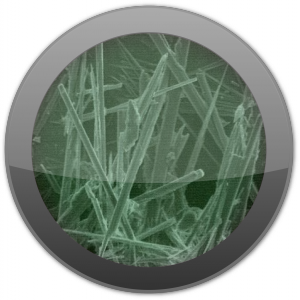Asbestos

What You Need to Know
containing (although some states have stricter regulations)There is no safe exposure limit for asbestosAsbestos is most harmful if friable or made friableAsbestos can be found in both the air as well as building material samples
What You Need To Do
Any building materials that may contain asbestos must not be impacted until and unless an asbestos survey has been performed (by qualified individuals) identifying any materials that may be asbestos containing. Once identified, all applicable federal, state, and local regulations must be complied with pertaining to removal, disposal, notification, and training.
Be aware that asbestos can be present even in buildings constructed last year and that all suspect asbestos containing materials must be tested prior to impact, not just buildings constructed during time periods when asbestos use was common (1940-1980).
Be aware that EPA and OSHA have regulations with respect to asbestos which must be complied with and include worker protection, notification, training, and disposal requirements
Myths and Misconceptions
Since our building was constructed within the last few years, we do not have to worry about testing for asbestos when impacting building materials during renovation/demolition activities-FALSE
The mere presence of asbestos creates a hazardous condition-FALSE
The latency period for developing an asbestos related disease after exposure can be 30 years or longer-TRUE
Smokers are at much greater risk for developing an asbestos related disease than non-smokers-TRUE
Expert Services:
Insurance
Claims: Prevention and Response
- Site Investigations/Inspections
- Loss Mitigation Protocol Development
- Creative Scope of Work Development
- Project Oversight
- Environmental Sampling
- Cause and Origin Investigation
- Emergency Response
- Client Interface
- Communication/Alert Development
- Liability Exposure Minimization
- Expert Consultation
Underwriting: New Product Development and Risk Assessment
- New and Emerging Risk Education-Focus on New Areas of Coverage Opportunity
- New and Emerging Product/Technology Applicability to Underwriting Coverage
- Recommendations for Coverage Expansion Based on Risk Minimization Strategies
- Policy Language Review/Development Based on Industry Specific Issues
Due Diligence: Investigation, Auditing, Verification and Risk Assessment
- Project Oversight Ensuring Compliance with Policy Coverage
- Immediate Communication re Project Issues Impacting Policies
- Detailed Reports of Project Findings/Oversight with Recommendations
- Cost Estimate Development Based on Construction/Remediation Options
- Phone Surveys/Desktop Reviews Focusing on Issues of Potential Concern
Remediation Cost Auditing and Risk Quantification
- Review/Audit of Contractor Invoices
- Scope of Work Performed Analysis (Best Practices, Regulatory Compliance)
Expert Testimony
- Environmental Risk
- Healthcare Risk
Education and Training: Claims and Underwriting
- Seminars/Webinars on Environmental/Healthcare Issues Focusing on Claims/Underwriting Risk
- Seminars/Webinars on Emerging Issues and Policy Impact as well as Coverage Expansion Opportunities
- White Paper Development
Insurance Toolkits: Claims and Underwriting
- Development of Underwriting Applications for Healthcare/Environmental Risk
- Development of Value Added Risk Management Checklists/Protocols for Insureds
- Operations and Maintenance Programs for Water Intrusion Risk Management, Asbestos, Lead Based Paint
- Hazard Assessment Critical Control Point Programs (HACCP)
Insurance Risk Alert Service
- Development of Insured Alert Communications re Emergency Healthcare/Environmental Risk
- Development of Employee Alert Communications re Emergency Healthcare/Environmental Risk

